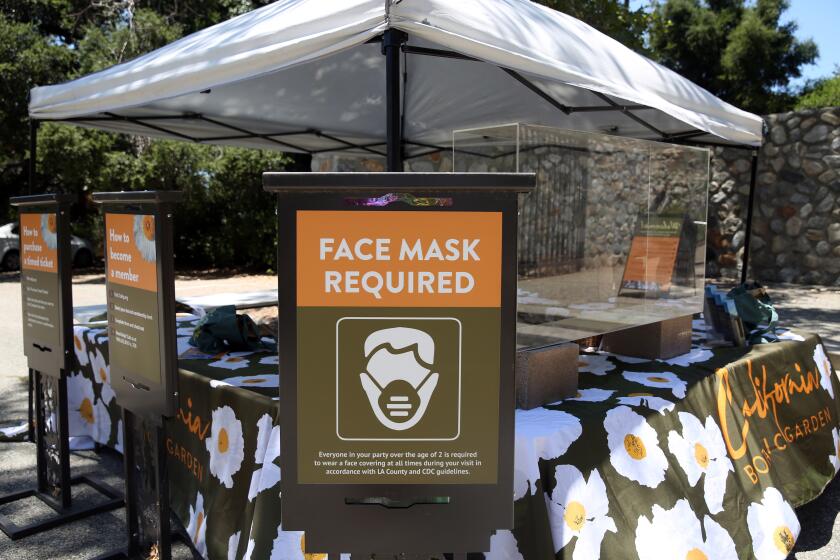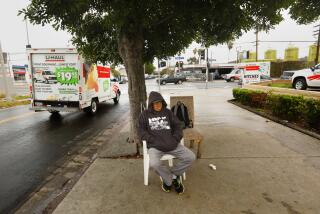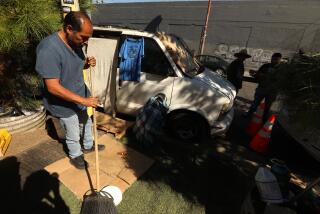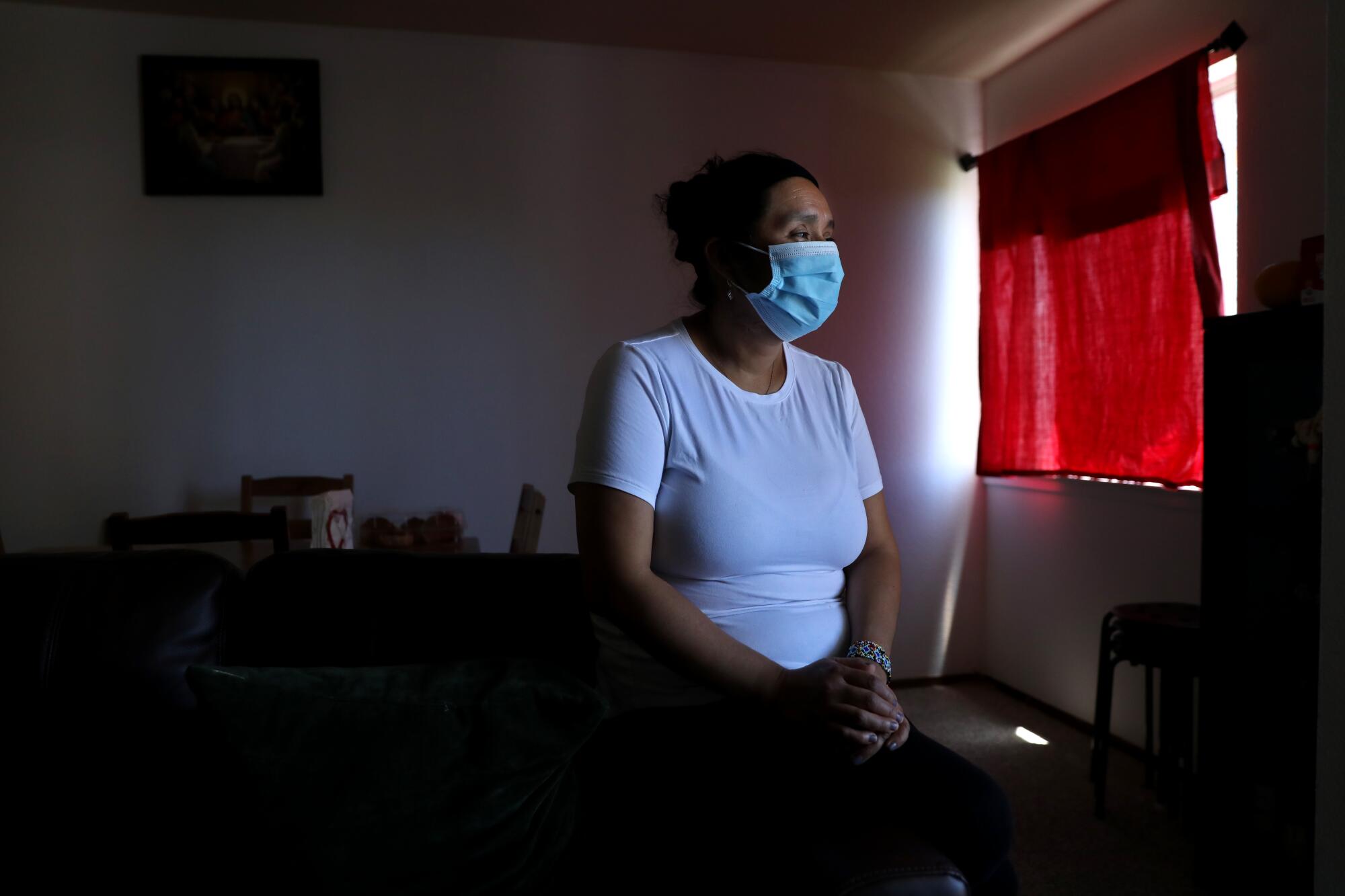
At least once a week in the mornings, Elsa Hernandez walks the mile from her apartment to the Mission Language and Vocational School, sometimes falling in line behind hundreds of other Latinos picking up groceries from the Mission Food Hub.
But on a recent Thursday afternoon, she stood in a different line near the hub. Wearing a mask, her red glasses propped on her head, Hernandez, 44, a longtime resident of San Francisco’s Mission District, took a COVID-19 test under a tent, while dozens of others waited their turn.
“We, as Latinos, don’t have the opportunity to work from home,” said Hernandez, a housekeeper who was seeking her second test in part because the pandemic has hit her community so hard.
A Times analysis has found that across California, people of color have been hit disproportionately hard by the coronavirus, with Latino residents three times more likely to test positive than white residents.
At least part of the inequity can be explained by the large numbers of Latino and Black Californians who serve as essential workers, unable to do their jobs from home and therefore more at risk of exposure to the virus. Some of those with the lowest pay are reluctant to get regularly tested out of fear they could lose their job with a single positive test.
In San Francisco’s Mission District, a community task force aims to address those fears and help essential workers through hard times.

The Latino Task Force successfully advocated for a citywide wage replacement program to encourage people to stay home and quarantine if they test positive. Public policy and labor experts say this “right-to-recover program” provides a social safety net for workers, especially as states across the U.S., including California, see a spike in cases.
“People are willing to expose themselves because they have to live, they have to survive,” said Jon Jacobo, who chairs the task force’s health committee, which partnered with UC San Francisco to conduct a study in the Mission to test Latinos. The program, he said, aims to give people an incentive to stay home and not have to worry about paying bills.
Formed after San Francisco’s original stay-at-home order was implemented in March, the task force, comprising four women and one man, originally focused on urging people to wash their hands.
But as the need has grown, so have their efforts. They now help people apply for healthcare coverage, rental assistance and unemployment. Most recently, they pushed for a COVID-19 testing site at the cultural center on Alabama Street, where volunteers hand out boxes of food to about 7,000 families each week. Many of the volunteers are sometimes on the receiving end of the help.
In San Francisco, the Mission District is home to most of the city’s Latino population, and the neighborhood’s rich history of activism and culture is depicted on the many murals that line the streets.

It’s the hardest-hit ZIP Code in a city where Latinos have paid the pandemic’s steepest price. In San Francisco, Latinos account for 15% of the population but make up nearly half of all positive COVID-19 cases.
Prior to the pandemic, longtime residents of the Mission were struggling with San Francisco’s other crisis: gentrification. Rising rents had pushed thousands out of the neighborhood and forced some families to double up in overcrowded dwellings, adding to the risks once the coronavirus arrived.
Farmworkers have long lived in overcrowded conditions. With the spread of coronavirus, Monterey County is taking action, but vegetable pickers still face a shortage of housing.
In Hernandez’s case, she worked three to four days a week cleaning homes. Now, she’s hanging on to four cleanings a month — not enough to pay bills and rent and feed her two sons and husband, who works in construction.
“We, as Latinos, don’t have the opportunity to work from home.”
— Elsa Hernandez, housekeeper
Because she is undocumented, she cannot rely on the government programs that are keeping some Americans afloat. Under the CARES Act, many Americans received a check for $1,200, but millions of others were left out. California began offering $500 stimulus checks to residents without legal immigration status, but that money is still being disbursed.
On a recent Friday afternoon, Hernandez stayed home with her sons, Dylan, 12, and Mathew, 5. At lunchtime, she joined Mathew for a call with his teacher and classmates on a laptop. Mathew munched on a taco de huevos and slurped on a Popsicle as he caught up with his friends.
When the pandemic first hit, Hernandez and her husband dug into their emergency funds to cover their bills, because her work had stopped completely. She had no paid sick leave, and none of her clients offered to keep paying her when they asked her to stay away. She said she has not applied for services like food stamps because she doesn’t want to become a “public charge.”
She and her husband pay $2,613 monthly to rent a two-bedroom apartment, and that will probably go up. She said she has considered moving away after living in the city for 16 years but feels drawn to San Francisco and her neighborhood, where she feels supported by the community and sees leaders like those in the task force advocating for people like her.
“I have lived in other cities, and none of the services that we have here are accessible in those places,” she said. “Yes, this is an expensive city, but the truth is, there are truly a lot of services here that you can access. … It’s a very kindhearted city.”

In April, a UC San Francisco study confirmed what many task force organizers already suspected: Low-wage working Latinos were among the most vulnerable to the coronavirus in the city because sheltering in place was largely not an option. Of the people who tested positive, 95% were Latino; more than 80% of those who tested positive made less than $50,000 a year.
One task force member, Valerie Tulier-Laiwa, said the group negotiated with the public health department to start testing at the cultural hub so that Latinos, who make up two-thirds of the neighborhood’s population, could be screened while seeking food or other help.
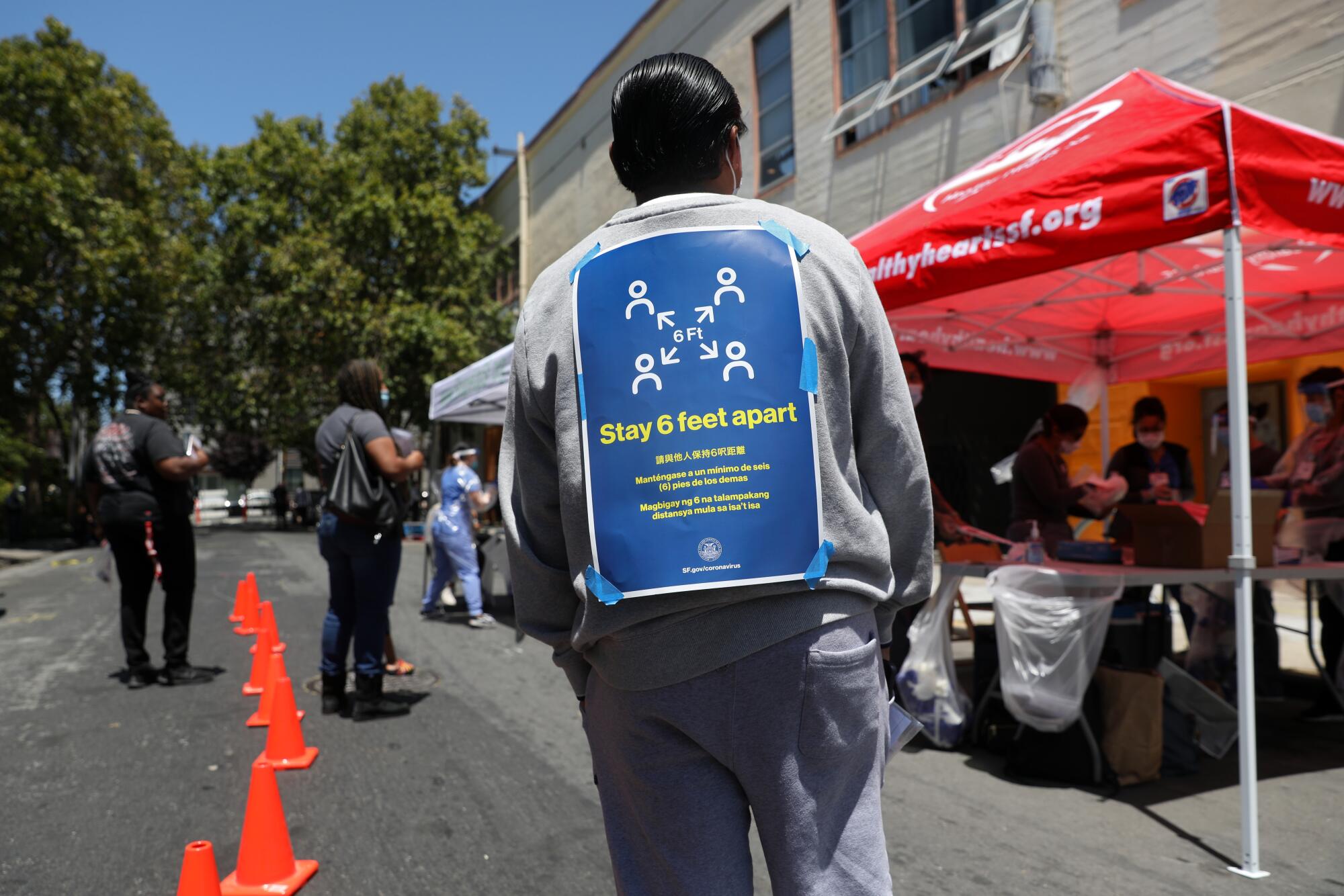
“When people live in poverty, they don’t just have one problem or one issue,” said Tulier-Laiwa, who grew up in the Mission but was forced out during a wave of gentrification. “There are multiple issues impacting people who are poor. So for us, we know that it’s not enough for them to receive results.” There needs to be follow-through, too, she said.
On a recent Wednesday morning, Mission District resident Yani Gonzalez arrived at the school at 6:15 a.m., an hour before volunteers showed up, to stake her place in line. The line wrapped around the block and down for several more, with people standing six feet apart. That day, Gonzalez, who has been out of a job for two months and just received her first unemployment check, took home a box of vegetables, fruit, chicken and a gallon of milk just before 11 a.m. The surprise item was a box of Velveeta macaroni and cheese.
But the real prize, said Roberto Y. Hernández, the task force member who started the food pantry in his garage before the group took over its warehouse space, is la masa. Hernández said the señoras in line will often ask whether the corn flour, a home staple, is available that day.
It’s important for him to source food that is part of the culture of Latino families, Hernández said.
Over the years, Hernández has decried gentrification and advocated for affordable housing units. In some cases, people are set up in tents behind homes and charged rent, he said, or crowded into any space they can get, from closets to garages.

“You go from one crisis to the corona crisis,” he said. He’s on the front lines with the task force, providing for the Mission District residents being left behind by government programs, often immigrant Latinos. “We know nobody else will do it for us. The government has failed us on a local level, on a state level, on a federal level,” he said.
Latinos now twice as likely to get coronavirus than whites in L.A. County
When it came to finding a solution to keep workers quarantined at home, the task force found an ally in Supervisor Hillary Ronen.
Jacobo, chair of the task force’s health committee, said they had already been raising money privately to replace lost wages for people who tested positive, when Ronen, who sits on an oversight committee for the city’s emergency fund, Give2SF, suggested tapping that for the program.
With $2 million, they created the right-to-recover program, which doesn’t require information about immigration or current employment status. They began disbursing funds in July, she said, and so far, more than 200 people — 81% of them Latino — have qualified. While the idea was born in the Mission, residents in other areas, like Bayview, a historically Black neighborhood, and Chinatown, which is predominantly Asian, can also apply.
“Nothing happens this quickly in San Francisco,” Ronen said. But because the money is coming from donors, the task force was able to bypass a long implementation process. “We’re just really trying to make it possible for people to rest and get better and quarantine.”
Jamila Michener, co-director of the Cornell Center for Health Equity, said essential workers often face choosing between the lesser of two evils.

“Nobody wants to go to work when they think they have COVID-19 and expose people. But if the choice is between that and seeing your children go hungry, you will expose people to this virus,” said Michener, who teaches about race, public policy and poverty.
But she questioned the program’s reliance on its current source of funding.
“I don’t think that the survival, the access to basic resources and the human dignity of people” should be dependent on the generosity of wealthy people, she said.
The future of the program will rely on philanthropy. Joaquín Torres, director of the San Francisco Office of Economic and Workforce Development, said that with the city facing a $1.5-billion budget deficit, officials will look to donors to keep the program going once the $2 million runs out.
Once the funds are out and they identify the need, “we can go back out to philanthropy and say, this is an absolutely viable, valuable program that serves the communities in need,” said Torres, whose office is supportive of but not part of the Latino Task Force.
The actions of the task force have inspired others like Raymond Whitley, a 31-year-old Bayview resident, who said the struggles of the Latino and Black communities are often the same. He said he wanted to take what is happening in the Mission — seeing the task force advocate for more testing and resources — and bring it to Bayview, where Black residents also shy away from getting tested for fear of losing their jobs.
“We have to do it for our community, and we have to step up and speak up,” he said. “We do need it, too.”
Times video journalist Jackeline Luna and photojournalist Gary Coronado contributed to this report.
More to Read
Start your day right
Sign up for Essential California for news, features and recommendations from the L.A. Times and beyond in your inbox six days a week.
You may occasionally receive promotional content from the Los Angeles Times.

